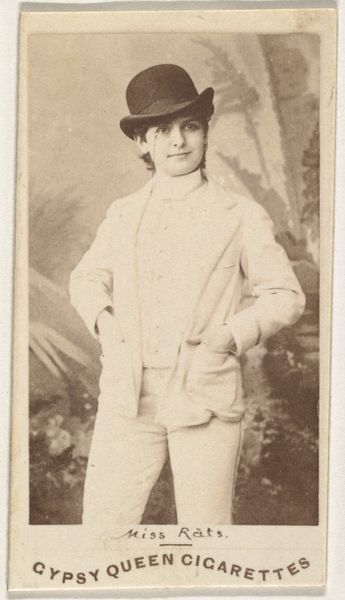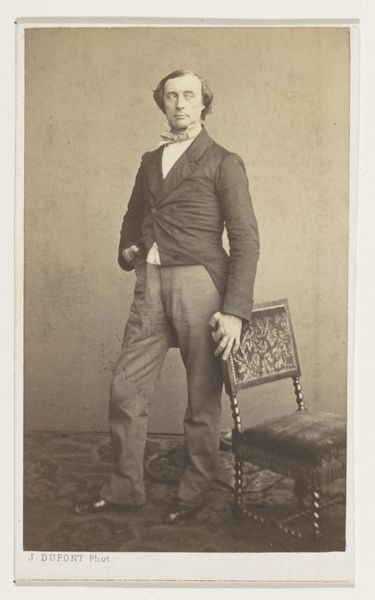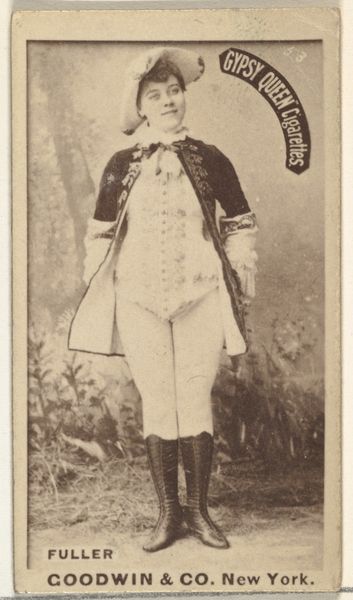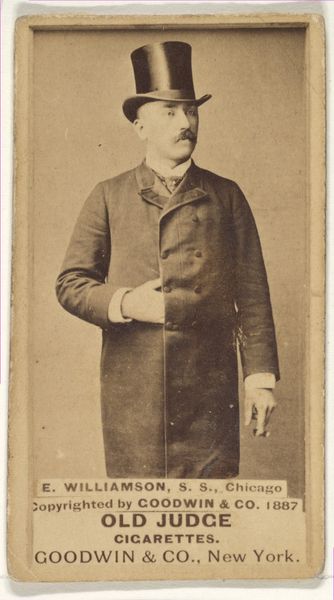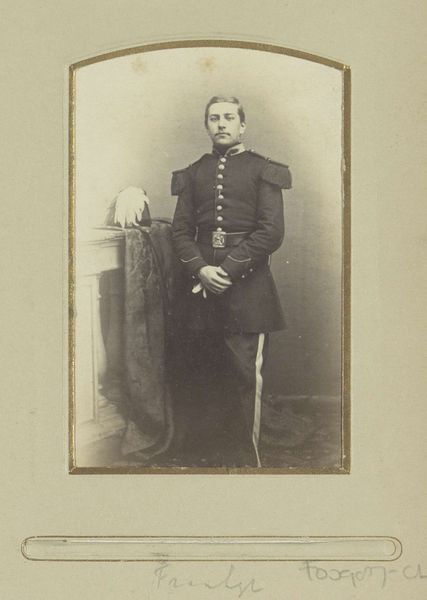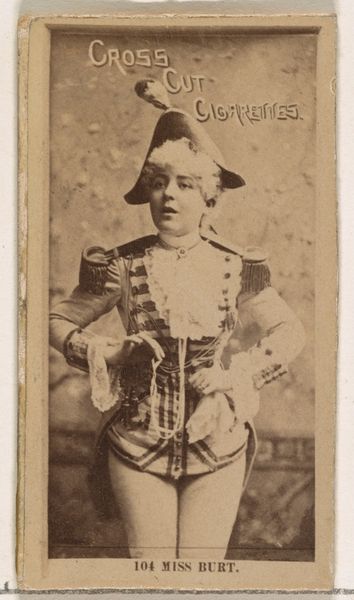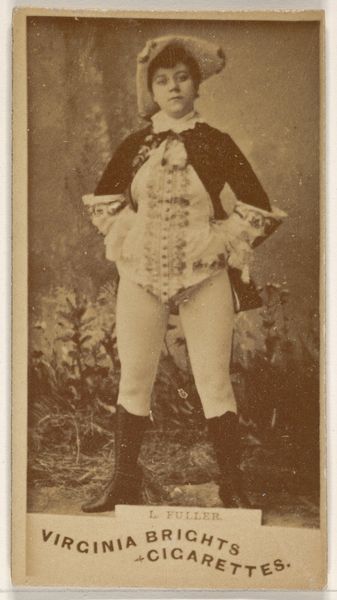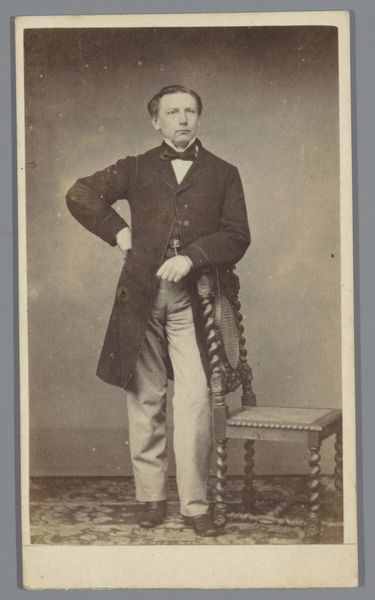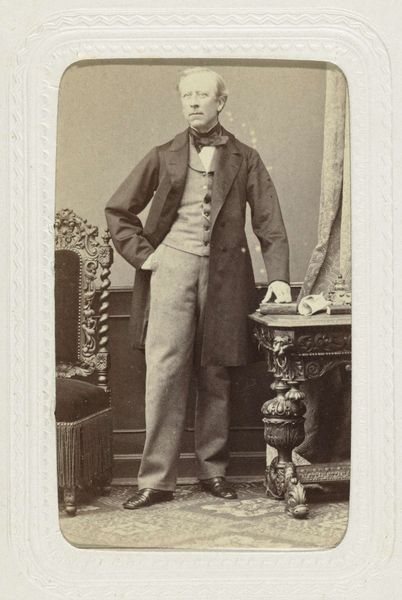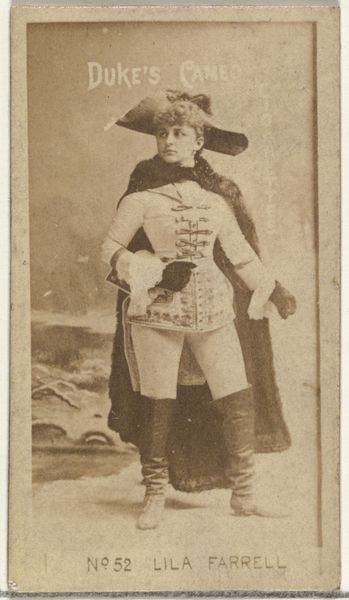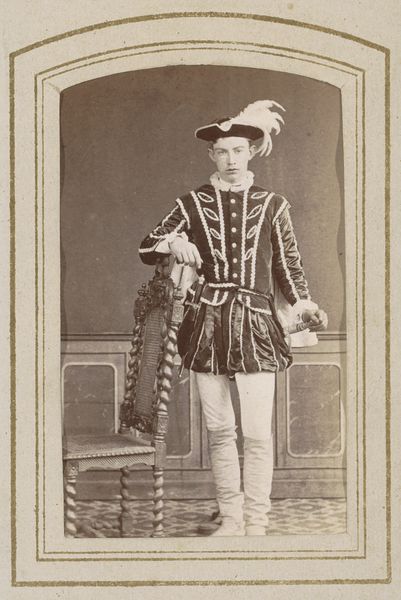
Louise Paullin, from the Actors and Actresses series (N171) for Gypsy Queen Cigarettes 1886 - 1890
0:00
0:00
drawing, print, photography
#
portrait
#
drawing
# print
#
photography
Dimensions: sheet: 2 11/16 x 1 3/8 in. (6.9 x 3.5 cm)
Copyright: Public Domain
Editor: Here we have a portrait of Louise Paullin, part of the “Actors and Actresses” series, created between 1886 and 1890 by Goodwin & Company for Gypsy Queen Cigarettes. It's a print, a drawing, and a photograph all in one. She's dressed in what appears to be masculine attire. What can you tell me about this piece? Curator: This image really speaks to the complex performance of gender and identity in the late 19th century. These cigarette cards functioned as both advertising and a form of proto-celebrity culture, but more importantly, they offer us a glimpse into how figures like Louise Paullin navigated gendered expectations. Notice how she is presented—androgynous, powerful. This wasn’t simply about cross-dressing; it challenged the rigid definitions of masculinity and femininity of the period. Consider the broader historical context: What roles were women playing on stage? And off? Editor: So, was this challenging gender norms in a subversive way, or was it playing into a novelty for commercial gain? Curator: It's a bit of both, I suspect. There's the clear commercial incentive for Goodwin & Company – selling cigarettes using the allure of popular figures. But Louise Paullin, in actively participating in this representation, likely had her own agency. She may have embraced this image as a form of self-expression, or even as a means of gaining visibility in a male-dominated industry. The act of costuming, particularly adopting typically male attire, presented an opportunity to destabilize societal expectations. Do you see how this resonates with contemporary discussions around gender fluidity? Editor: It does, especially regarding representation and visibility. It is interesting to see some kind of disruption in traditional gender roles presented even in this unexpected format. Curator: Precisely! And it reminds us that the fight for gender equality has deep historical roots, expressed in the most unexpected places. We have to analyze these works considering that context and see how these representations have influenced modern perceptions about gender identity. Editor: Thank you for clarifying that; now I can definitely see this piece in a new light!
Comments
No comments
Be the first to comment and join the conversation on the ultimate creative platform.
